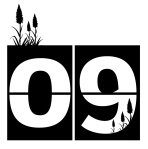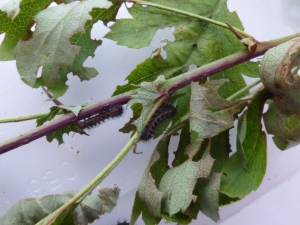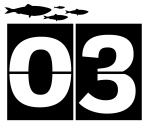Days Thirteen & Fourteen of Megan & Matt Go Wild!
Welcome to our joint-blogging series for the Wildlife Trusts’ 30 Days Wild Challenge – you can read more about the campaign and ourselves in our introduction page.
Megan (in various parts of Dorset)
Crikey, that was a weekend and a half! I don’t think we could have fitted in much more wildlife if we had tried! A trip over to Brownsea Island for Saturday morning was a brilliant start. I had volunteered my time to help with the Dorset Wildlife Trust side of the bioblitz. The warden had tempted me over with the promise of many moth traps, and he was true to his word! There were some fantastic moths to behold – both colourful ones and (many) ones that I hadn’t seen before. The highlights for me were the Privet Hawk-Moth (Sphinx ligustri) and the Common Cockchafer / Maybug (Melolontha melolontha), just look at the antennae on the latter!!
A quick (ish) stop by RSPB’s Radipole Lake reserve resulted in us failing to hear / see Common Rosefinch (Carpodacus erythrinus), but Matt saw his first (also, 2nd-6th) Bee Orchid (Ophrys apifera). He has taken some absolutely superb photos – I must get him to teach me how to improve my photography techniques!
A (very early) morning on the Isle of Portland meant more rummaging in moth traps at the Portland Bird Observatory, my first Little Owl (Athene noctua), plus my first Pyramidal Orchids (Anacamptis pyramidalis) of 2015, as well as catching up with the Pan-species Listing group.
It was wonderful to go out and find wildlife with Matt – we first met through our love of nature and wanting to conserve it, so it feels right that going out into the natural world is a continuing theme in our relationship. After a busy week of work for the both of us, a weekend of connecting with nature in Dorset together was perfect timing.
Matt (in various parts of Dorset)
What can I say? This weekend has been so wild I haven’t had time to do any writing.
I spent the weekend with Megan in Dorset, visiting a string of wildlife sites and seeing a whole bunch of wildlife.
We were truly wild this weekend, waking up early both days to get out and see some nature.
Saturday took us to Brownsea island where I saw my first ever red squirrel in the UK, a longtime omission from my UK species list.
We also joined the bioblitz being run there and Megan worked her way through a myriad of moths.
Best of all for me was the chance to spend a couple of hours lying on my belly pointing my camera at squirrels. The results will follow soon.
The harbour between Poole and Brownsea was full of terns, gulls and even a diving gannet.
That afternoon we tried to track down a common rosefinch at Radipole Lake. Failing to find this rather dull first summer male we instead spent about an hour photographing bee orchids.
On Sunday we started even earlier to get ourselves over to one of the institutions of British birdwatching: Portland Bird Observeratory
Here, again, we peered into the many moth traps, before seeking out the little owl in the quarry and photographing pyramidal orchids in the meadow. Manx shearwaters and gannets sped by over the waves.
After a week during which work made it difficult to find time for wild, we made up for it in oodles this weekend.
Best of all it was all with my partner in crime and best friend.








































